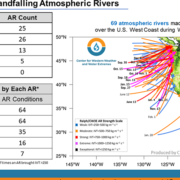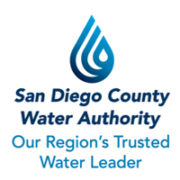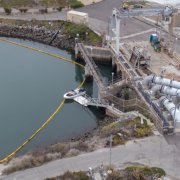Atmospheric Rivers Left California Mostly Dry in Water Year 2021
The Center for Western Weather and Water Extremes, or CW3E, at Scripps Institution of Oceanography, released its report October 11 on atmospheric rivers during Water Year 2021.
The report, “Distribution of Landfalling Atmospheric Rivers over the U.S. West Coast During Water Year 2021: End of Water Year Summary” shows that more atmospheric rivers landed on the U.S. West Coast in Water Year 2021 than in Water Year 2020. But the majority of those storms reached the Pacific Northwest, not California, where drought conditions have impacted water supply.
“The report on atmospheric rivers shows the variability in weather across the state from year to year,” said Jeff Stephenson, Water Resources Manager with the San Diego County Water Authority. “Through our partnership with CW3E and the AR forecasting tools they’ve developed, it better prepares us in management of our water resources using regional storage. This storage, in conjunction with developing multiple water supply sources in the San Diego region, has prepared us for years when rainfall levels are below normal in the region.”
The summary report from CW3E
Water Year 2021 experienced a total of 69 landfalling ARs over the U.S. West Coast, 4 more than Water Year 2020.
• While WY 2021 experienced more ARs, a much larger majority of the ARs only impacted the Pacific Northwest.
• California only experienced AR conditions (IVT >250 kg m–1 s–1) from 36 separate ARs during WY 2021, compared to 43
during WY 2020.
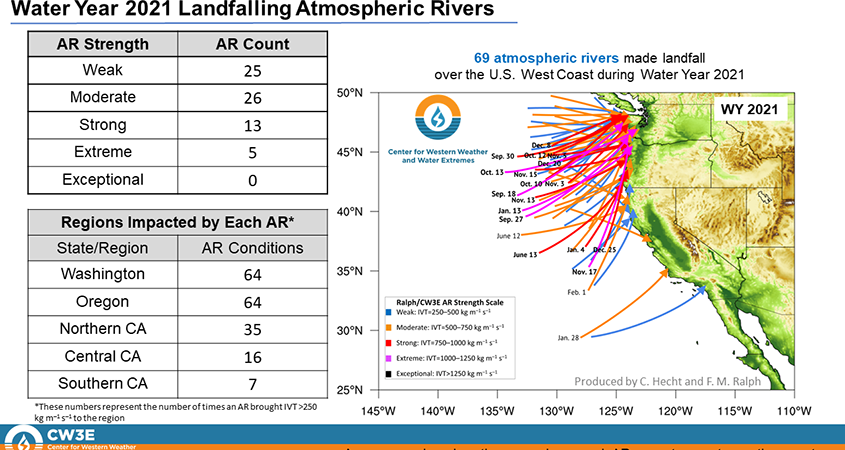
Distribution of Landfalling Atmospheric Rivers over the U.S. West Coast During Water Year 2021: End of Water Year Summary. Graphic: Center for Western Weather and Water Extremes
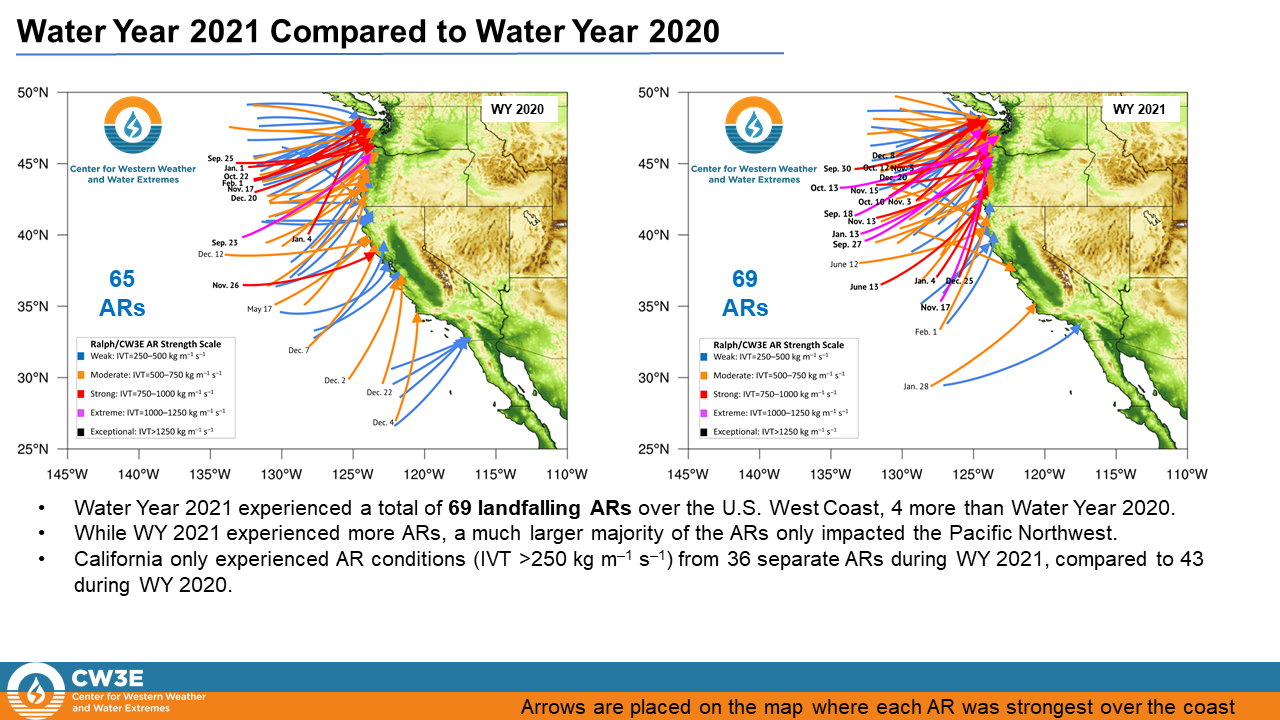
Fewer Atmospheric Rivers in California
The lack of AR activity over California for two consecutive water years has resulted in a substantial lack of precipitation.
• A large portion of California received <30% of the normal precipitation for both Water Year 2020 and 2021.
• Coastal Washington and Oregon was the only location in the Western U.S. to receive near or above normal precipitation
during both water years, which is also the region that received a majority of the AR activity.
California experienced strong or greater magnitude AR conditions only three times during WY 2020 and 2021 combined
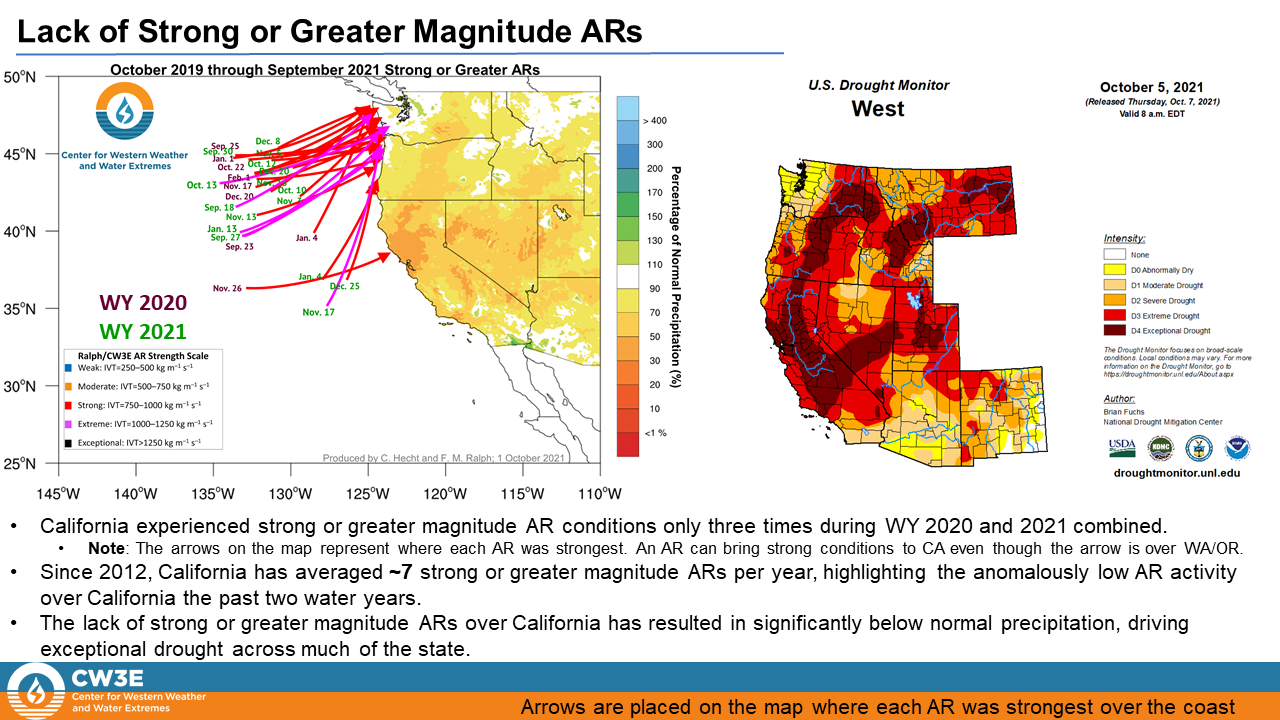
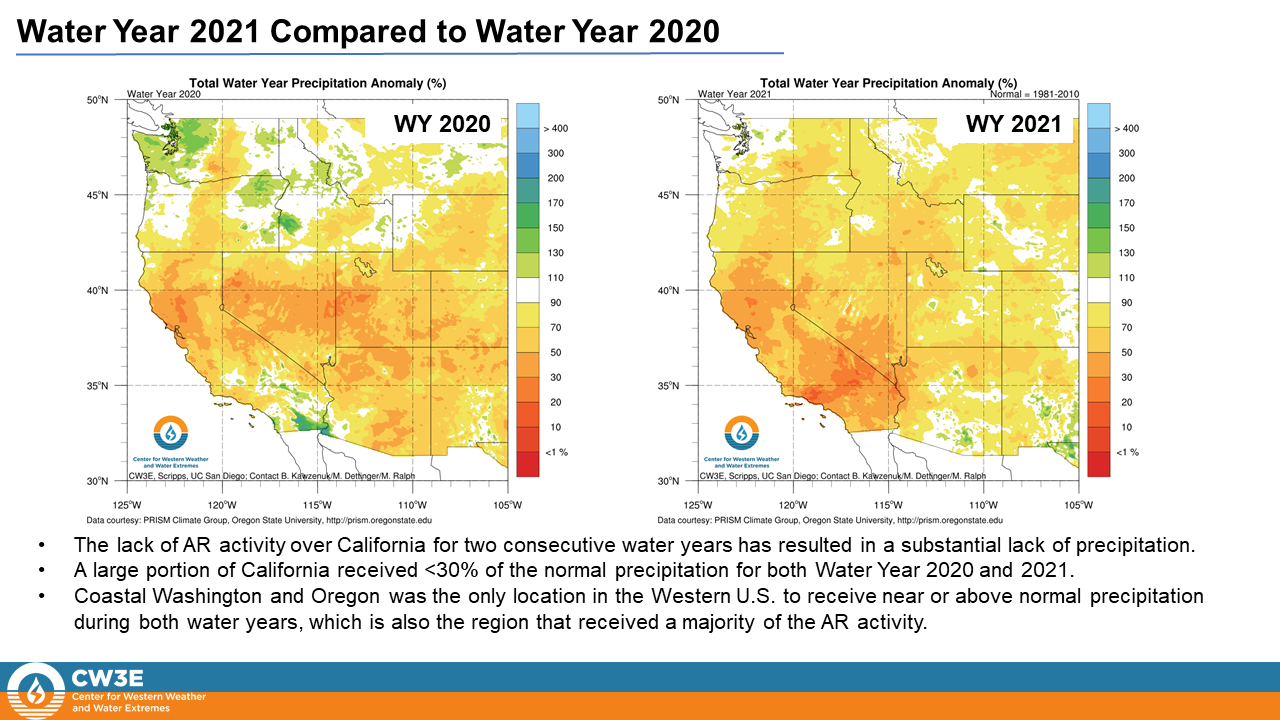
The San Diego County Water Authority partnered with the Scripps Institution of Oceanography, Center for Western Weather and Water Extremes, at UC San Diego in 2020 to better predict atmospheric rivers and improve water management before, during, and after those seasonal storms. The Center and its partners share best practices in forecast-informed reservoir operations, increased research around atmospheric rivers and droughts, and develop strategies for mitigating flood risk and increasing water supply reliability.
For additional details and graphics go to: https://bit.ly/3mKhkcR

